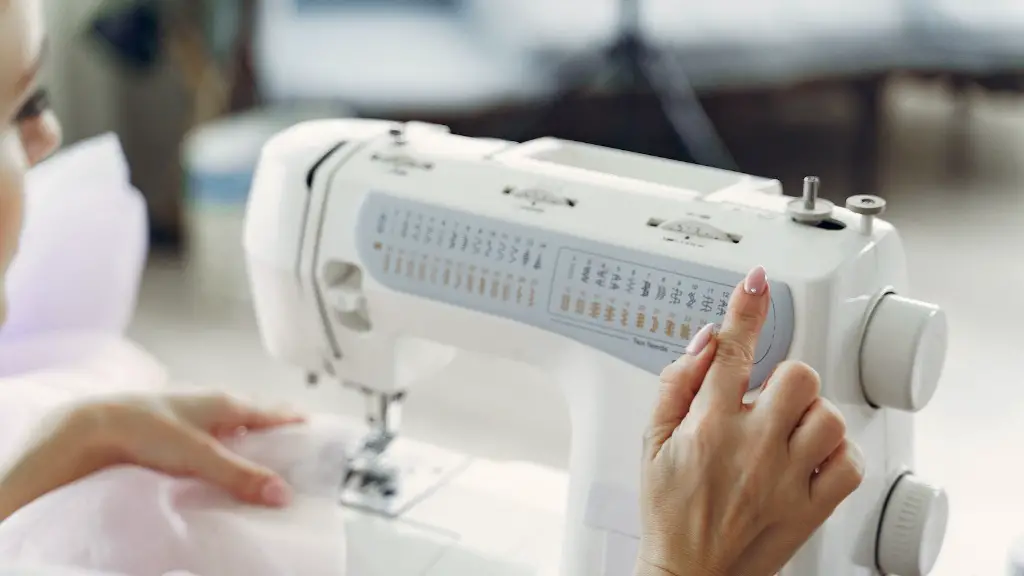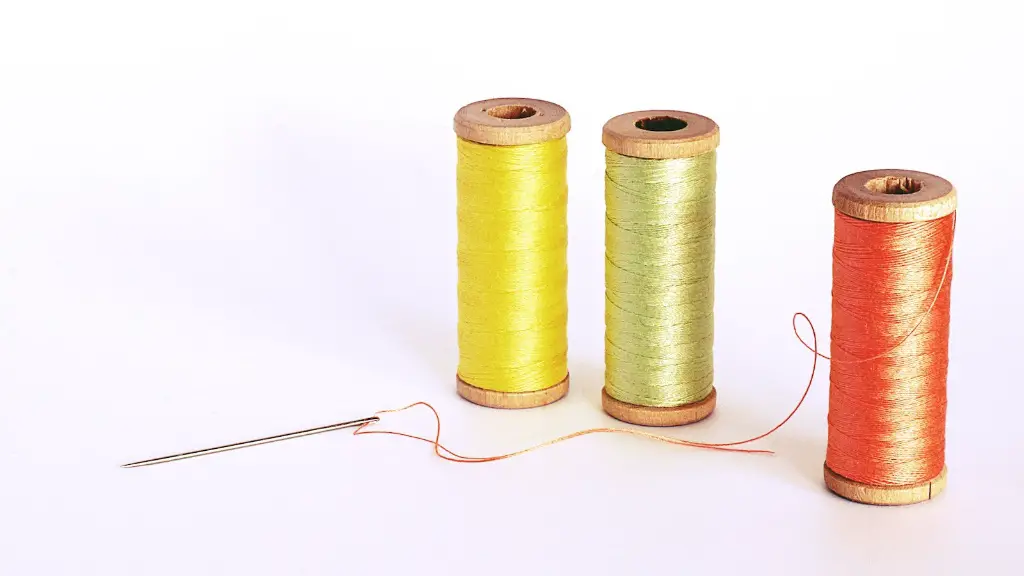Manual sewing machines are a time-honoured tool of the sewing trade and are still highly popular among hobbyists. While using a manual sewing machine may look complicated to the beginner, in reality, it’s quite simple. In this article we will explore the anatomy of the machine and delve into its inner workings, giving us a better understanding of how a manual sewing machine works.
The first part of a manual sewing machine is the needle. This is the end that slides through fabric, often with the help of a presser foot, which is a metal claw-like contraption that holds the fabric in place while the needle slides through. All fabrics have a looping thread on the backside and the needle punch through the fabric and the thread to sew that piece together.
Another important component of the manual sewing machine is the bobbin, which is a small spool of thread that sits at the bottom of the machine. This is the thread that will go through the back side of the fabric as the needle pierces through the front. It is also important to note that the bobbin must be wound properly with the thread, or the stitching may not be strong enough.
When a manual sewing machine is in operation, the needle moves up and down rapidly. This is where the feed dogs come in, metal pieces attached underneath the foot of the machine that grip onto fabric and move it along as the needle moves up and down. This is what gives the manual sewing machine its signature stitch pattern.
As the needle moves up and down, it is also forced in and out which creates a loop of thread underneath the cloth. The manual foot pedal controls the speed of the needle, and should be used carefully as it can be easy to lose control of the flow if one presses too hard. The foot pedal is also used to reverse the needle motion, which is useful when backstitching.
Finally, the stitch length dial allows the user to control how small or large the stitches are. Having the ability to adjust the stitch length gives the user more control and enables them to create unique patterns and designs.
Threading and Tension
Threading a manual sewing machine can be a bit intimidating, as there are a lot of components and without the right setup, the machine won’t produce a good result. The trick is to not rush it and to make sure that the needle and bobbin are correctly threaded in order for the machine to produce a visible, strong stitch.
For the needle thread, the user should first thread the long thread from the spool up toward the needle and catch it with the needle threader. Then, thread the needle by simply inserting the thread through the eye of the needle. Finally, the user will have to adjust the thread tension, which is the amount of pressure being applied to the thread by the machine. Depending on the type of fabric and the stitch, the tension needs to be adjusted accordingly.
For the bobbin thread, firstly the spool of thread is put inside the bobbin, and then the bobbin is slipped into its holder underneath the machine. Secondly, thread the bobbin by pulling the thread from the bobbin and around the tension wheel and then spinning the wheel. Lastly, pull the thread back through the slot and pull several inches of excess out of the machine.
Maintenance
Manual sewing machines require regular maintenance and cleaning in order to keep them in good working order. The first step is to make sure that the inside of the machine is kept dust and lint-free. This should be done by using an air compressor or a small vacuum to get rid of dust and lint that can build up inside.
Oil should also be applied regularly to the movable parts of the machine, such as the loopers, the top thread sensors, and the needle bar. Doing this will ensure that the machine is running smoothly and will also extend the life of the components.
Finally, it is important to check the tension of the needle and the bobbin thread from time to time. These two threads should be tightly wound and their tension should be adjusted in order to ensure that a strong, visible stitch is produced.
A Final Word
Manual sewing machines are fun and easy to use, though beginners may find them intimidating at first. By understanding the anatomy and inner workings of the machine, users can gain a better understanding of how to properly use one as well as how to maintain it over time. With the right knowledge and care, manual sewing machines can bring years of joy and use.
Advantages of Manual Sewing Machines
Manual sewing machines have some key advantages over traditional electric sewing machines. Firstly, they can be carried around more easily than electric sewing machines, making them very convenient. Secondly, manual sewing machines are cheaper than their electric counterparts, making them an ideal choice for those who are on a budget.
In addition, manual sewing machines often come with stitch selection options, which can make the process of sewing more diverse and interesting. They can also be great for small crafting projects, as they are easier to use and have more manoeuvrability than electric machines.
Finally, they are often quieter than electric machines, making them a better option for those living in noisy neighbourhoods as they won’t disturb their neighbours as much. This is also of great benefit to those with young families, as it will be less likely to wake up sleeping children with the whirring of a sewing machine.
Disadvantages of Manual Sewing Machines
On the other hand, manual sewing machines have some key disadvantages as well. For starters, they are much slower than electric machines, which means that it will take more time and effort to complete any given project.
In addition, manual machines are less powerful, meaning that some fabrics may be too thick or tough for them to handle. Moreover, manual sewing machines don’t have many features and bells-and-whistles that electric machines do, such as built-in patterns and automated functions. Finally, manual machines require more maintenance than electric machines, as oil needs to be applied and parts need to be regularly cleaned.
Advantages vs. Disadvantages
Ultimately, when it comes to manual sewing machines, the pros and cons must be weighed against one another. For those on a budget, manual sewing machines are a great option as they are relatively inexpensive and still provide decent performance. Since they are quieter and more compact than electric machines, they are also a good choice for those living in noisy areas or with young families.
On the other hand, manual machines can be slow and require more maintenance than electric machines. Moreover, they may not be best suited for thicker fabrics or larger projects, as they are not as powerful as electric machines. Those who are looking for machines with more features and automated functions should probably consider electric machines.




